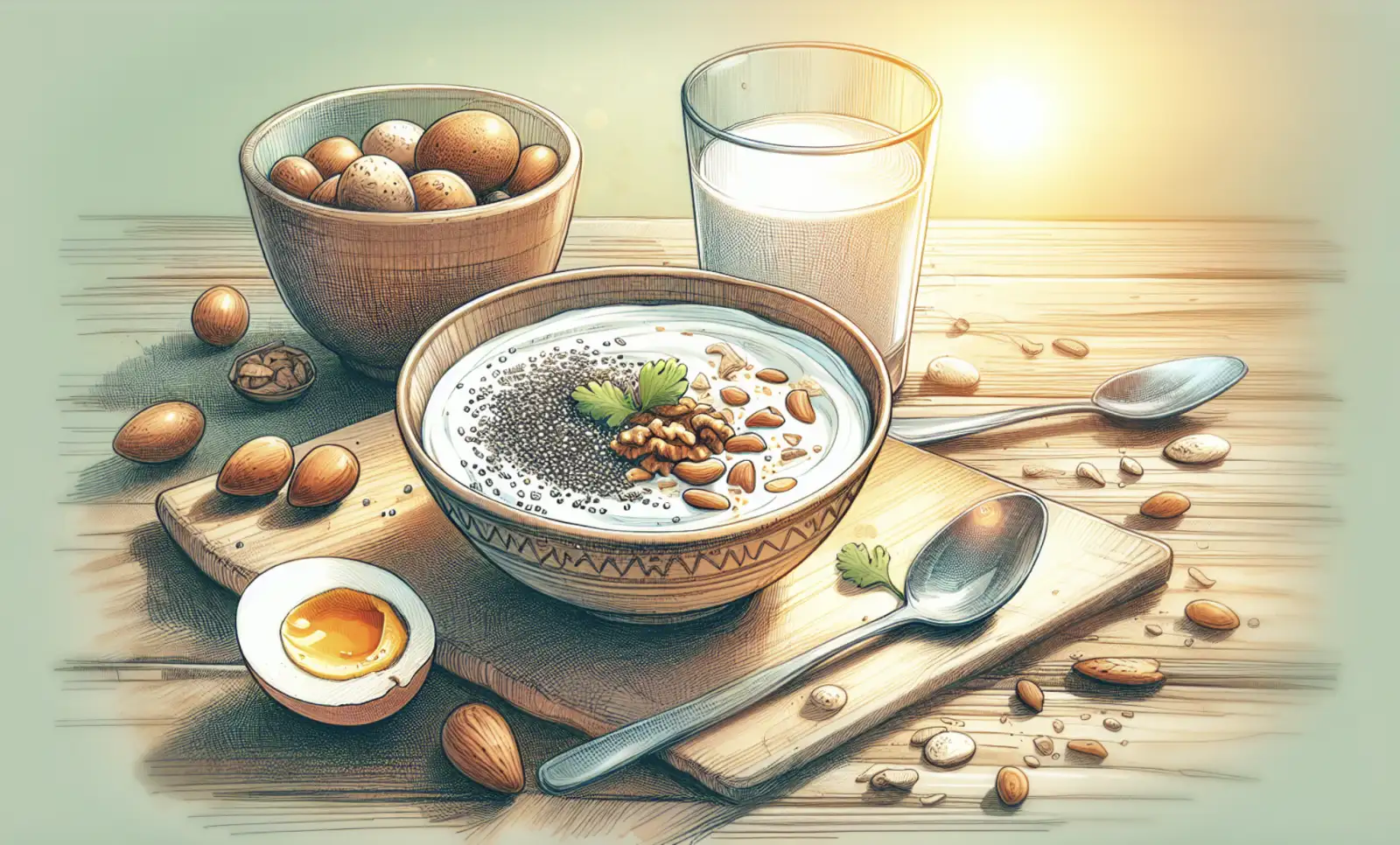Find Your Protein Balance for a Healthy Lifestyle

Translated by AI
A Breakfast Awakening
On hectic mornings, Andrew was accustomed to hastily snatching a quick breakfast. Just a bowl of cereal and a glass of orange juice, and he'd set off for the day. Though seemingly simple and healthy, this breakfast would leave him feeling hungry rather quickly, unable to sustain himself for long, needing a snack by ten a.m.
One day, he brought this up with his fitness coach, who suggested trying to incorporate some protein into his breakfast – like boiled eggs or Greek yogurt. Andrew, even though slightly skeptical, gave it a shot for a few days and found that he managed to stave off hunger until noon and felt noticeably more focused. This revelation made him curious about the significant role protein plays in life.
This tale of Andrew reflects a broader tendency to underestimate the importance of protein consumption. In our daily diet, we often focus solely on calories or carbohydrates, overlooking protein—the “foundation of health.” So, how does one consume protein intelligently to ensure better health and higher energy levels?
The Golden Rule of Protein: Both Quality and Quantity Matter
If one considers the body to be akin to a building, then protein acts as the rebar and concrete, crucial for firm support and structure. Each rebar signifies an amino acid (the building block of protein), intertwined to form a sturdy framework. Proteins are foundational to cells, tissues, and organs, responsible for constructing and restoring muscles, skin, and hair. Whether it’s muscle recovery post-exercise or wound healing, protein plays a non-negotiable role, much like reinforced concrete guarantees a building's integrity. The better the quality of protein, the healthier the body.
For the everyday individual, a daily intake of 0.8 grams of protein per kilogram of body weight is recommended. For instance, a person weighing 60 kilograms requires about 48 grams of protein each day. For those with increased physical activity, such as fitness enthusiasts or athletes, the requirement rises to 1.2 to 2.0 grams per kilogram of body weight. Moreover, individuals aged 70 and above should aim for 1.2 grams per kilogram for muscle mass maintenance. Nonetheless, excessive protein can place a strain on health—overburdening the kidneys or leading to inadequate fiber intake. Hence, discovering one's “golden ratio” is critical.
Protein categorizes into two primary sources—animal and plant-based, each offering distinct advantages.
- Animal-based Protein: Eggs, fish, chicken breast, and dairy are quintessential providers of all essential amino acids the body can't produce itself. These proteins support muscle growth, immune function, and tissue repair. Notably, low-fat, high-protein foods like chicken breasts are unrivaled for those aiming for muscle gain and fat reduction. Eggs, dense in nutrients, offer superb quality proteins, also enriched with vitamins, minerals, and antioxidants for comprehensive health.
- Plant-based Protein: Beans, nuts, quinoa, and chia seeds are protein-rich and packed with dietary fiber to enhance digestive health. Plant proteins abound in phytochemicals—natural compounds delivering antioxidative, anti-inflammatory, and cardiovascular protection. Quinoa—which classifies as a “complete protein”—comprises all necessary amino acids, making it a treasured source for vegetarians. Nuts not only provide hefty proteins but are abundant in heart-beneficial healthy fats.
Whether choosing animal or plant-based protein, both supply essential nutrients. According to personal preferences and dietary habits, skillfully combining these protein sources facilitates optimal health benefits.
Making Protein Consumption Enjoyable: Creative Combination Ideas
Breakfast
- Protein-Packed Oatmeal: Mix Greek yogurt, fresh fruit, and chia seeds with oatmeal for a nutritious start.
- Cucumber Egg Salad: Crisp cucumber mixed with boiled eggs, sprinkled with a touch of salt and drizzled with cold-pressed olive oil, offers a rich taste.
Lunch
- Quinoa Salad: Tossed with grilled chicken breast, cherry tomatoes, and avocado, it's a full-flavor, refreshing dish.
- Tofu and Veggie Poke Bowl: Tofu establishes a creamy base, while fresh seasonal veggies like carrots, cucumber, and bell peppers add color and fiber. It's delicious, healthy, simple to prepare, and fits diverse diet preferences.
Dinner
- Salmon Set Plate: Served with steamed sweet potatoes and seasonal greens, this plate meets daily nutritional needs.
- Vegetarian Soup: Consider rich and delectable red lentil soup, high in protein.
Tools and Tips: Effortless Protein Tracking
Wondering about your protein intake? Here’s how to monitor it:
- Nutrition Monitoring Apps: Apps, like MyFitnessPal, aid in tracking daily protein consumption.
- Quick Calculation Technique: Remember common food protein content, such as:
- 100 g of chicken breast ≈ 31 g of protein
- One large egg ≈ 6 g of protein
- One cup of cooked quinoa ≈ 8 g of protein
Protein should be evenly distributed across meals to prevent overconsumption and ensure efficient absorption.
Whether you're a busy professional, a vegetarian, or a fitness advocate, protein stands at the heart of a wholesome lifestyle. Try adding some protein to every meal to experience the stability, energy, and satiety it provides. Through valuing both the quality and quantity of protein, it emerges as a potent ally for sustainable health!












